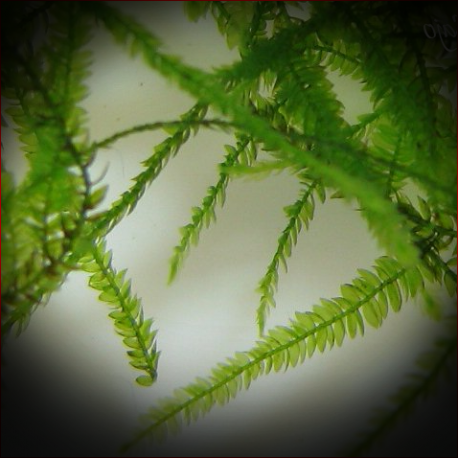More info
Datasheet
| Aquarium Compatible | yes |
| Plant Outdoor | unknown |
| Plant Emersed Growth | yes |
| Plant Growth | slow |
| Temperature Tolerance | 4°C / 39.20°F - 32°C / 89.60°F |
| Temperature | 15°C / 59.00°F - 30°C / 86.00°F |
| Carbonate Hardness | 0-21 kh |
| pH Value | 5-8 ph |
| Light | low-high |
| Carbon Dioxide (CO2) | 10-40mg/lmg/l |
| Nitrate (NO3-) | 10-50mg/lmg/l |
| Phosphate (PO43-) | 0.1-3mg/lmg/l |
| Potassium (K+) | 5-30mg/lmg/l |
| Iron (Fe) | 0.01-0.5mg/lmg/l |
General Description
Vesicularia dubya, more commonly known as Java moss, has been a staple in the aquaristics world for over five decades. As a member of the Hypnaceae family under the Mosses category, it has a creeping or horizontal growth habit and is often mistaken for Taxiphyllum barbieri. This aquatic plant has longer leaf cells, sporophyte development both emersed and submerged, and a decorative appearance due to its finely ramified branches.
Aquarium Suitability
With a very easy difficulty level, Vesicularia dubya is highly suitable for aquariums, thriving in a variety of environments. Its slow growth rate and epiphytic nature make it an excellent choice for nano tanks and hardscape decorations. It can be utilized as a spawning plant, particularly in setups where regular trimming can be done to maintain its shape.
Demands and Hardiness
According to its water conditions requirements (see table), Vesicularia dubya thrives in low to high light settings but prefers at least moderate lighting for optimal ramification. It is undemanding and grows well in CO2 levels ranging from 10-40 mg/l. This moss species can adapt to temperatures between 15-30°C, with a moderate tolerance range.
Aquascaping & Usage
Ideal for epiphytic growth on driftwood or rocks, Java moss enhances the aesthetic appeal of aquariums. Its resemblance to rugged forest moss is complemented by the reddish-brown sporophyte capsules that add color and interest to underwater landscapes. The moss's versatility allows for various aquascaping designs, making it a popular choice among aquarists.
Propagation
Propagation of Vesicularia dubya can be achieved through splitting or cutting off daughter plants. This straightforward method enables aquarium enthusiasts to expand their moss coverage and create lush greenery within their tanks.
Habitat and Distribution
Naturally distributed in the Asian tropics, Java moss, or Vesicularia dubya, thrives in moist-wet locations both emersed and submerged. It closely resembles Christmas moss (Vesicularia montagnei) but can be distinguished by its narrower leaves and irregular branching patterns.ongoing confusion around its nomenclature, its origins as a highly adaptable plant continue to make it a popular choice in aquascaping.

